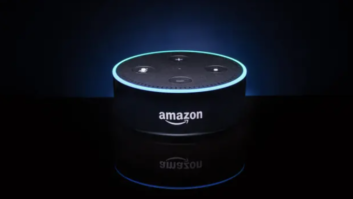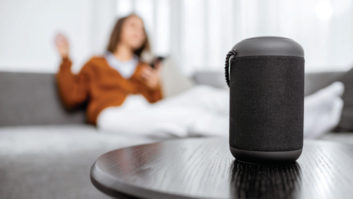Smart speakers like the Amazon Alexa-enabled Echo, Apple HomePod and Google Home are certainly cool. The user simply tells it what to do — “Hey Google, play me some Pink Floyd” — and presto, the speaker pulls up Floyd music from the web.

But what’s cool for listeners isn’t necessarily cool for radio. In fact, some broadcasters might see smart speakers as another way to lose listeners to the web, an argument sometimes heard when discussing mobile listening apps.
How can radio use these tools to grow audiences rather than lose them? At NAB Show, the Wednesday session “Maximizing Smart Devices and Mobile Apps for Radio” will feature three innovators exploring the topic: Steven Meyers, EVP of digital at Beasley Media Group; Brian Savoie, NAB’s senior director of technology education and outreach; and Jeremy Sinon, VP digital strategy with Hubbard Radio. The session is moderated by Radio World Content Editor Emily Reigart.
To be sure, all three of the panelists see both smart devices and mobile apps as useful channels to bring radio content to more listeners.
OPPORTUNITY
“Let’s focus on the smart speaker,” said Brian Savoie. “At a foundational level, these devices serve as a beachhead to build at-home listening. This is extending the value of that program stream that broadcasters have been pushing out for years to their mobile and web audiences.”
Jeremy Sinon similarly is bullish about mobile listening apps as audience-builders.
“Having a great, scalable mobile app allows us to create experiences that never before were possible for radio,” he said. “Whether it’s bringing in podcasts, video, social media and other consumable assets, or creating secondary experiences along with listening to the radio stream like listening rewards, the mobile app gives us a platform where we can experiment and explore all of these possibilities.”
Sinon added that the interactive nature of such apps allows stations to really engage their listeners in ways that conventional broadcasting cannot, even with the help of listener-initiated emails, texts and telephone calls.
For instance, he said, “Push notifications have also given us a great way to connect with our listeners in a way that feels very personal and special to the app user. We offer them exclusive chances at prizes and ‘can’t buy it’ type experiences, we give them reminders about ‘must hear’ moments happening on the air, we send them breaking news and more; and the best part is that it’s all entirely customizable for the listener.”
Smart speakers and mobile apps are part of listener-driven reality; so broadcasters, it seems, must continue to adapt.
“More and more our audiences are building their own personal multi-media ecosystems to suit their lifestyle and preferences,” said Meyers. “It’s important that our brands are not only available across each of the new media channels available, but that they also take advantage of each channels’ unique benefits and context.”
ASSESSING RISKS
Adapting to change is never easy for an established medium; and there are financial risks associated with investing in new technologies, some of which won’t pan out. “Are the business models ready?” Savoie cited as a common question. “Will there be a tangible ROI?”
But consensus estimates are that more than 75 percent of households will have some type of smart speaker in their home by 2020, he said. “That sounds like an opportunity that audio content providers including radio broadcasters need to fully explore.”
For his part, Sinon said the risk to broadcasters is one-sided. “I have not heard any arguments claiming there are dangers into getting into the smart speaker space. I’d be very curious to hear what the nay-sayers have to say,” he said. “I will say this, though: We don’t have a choice.”

Meyers echoed the point. “I would argue that the danger is in not pursuing the smart speaker market. It’s still early days, especially with exploring revenue models, but I believe our brands should be well represented not only with live streams, but more fully within the conversational context of what makes these smart speaker platforms so attractive.”
MAKING MONEY
Beasley Media Group and Hubbard Radio are among companies walking the talk.
“As of last fall, Beasley’s brands are now fully represented on the Amazon Alexa service,” said Meyers. “Today we offer live streaming and a special selection of on-demand content for each brand. This year our focus is on adding personalization and cross-platform synchronization to our web, mobile app, smart speaker and smart dashboard offerings.”
Sinon said, “Hubbard has produced our own skills for Alexa. The skills are very basic right now, simply starting and stopping the stream. However we are working on many enhancements including bringing in our podcasts, ability to access or music data Ñ ‘Alexa, ask KS95 what song this is’ Ñ user authentication and tie-ins to our listening rewards platform.”
Are these broadcasters making money by investing in these forms of media?
“Sure, we absolutely are,” said Sinon. “Our streaming players and mobile apps have opened up opportunities for advertisers to participate and offer prizes in our rewards platform. The right campaign can generate tremendous results for our clients.”
At Beasley, said Meyers, “We have seen traction with large national brands who are interested in being ‘first in’ on new technology initiatives and sponsorships. The revenue model is still evolving, however, and we believe there is room for new opportunity growth.”
A big picture view is provided by NAB’s Brian Savoie. “It’s really early days in the area of monetization. These are rapidly evolving and scaling platforms where content producers are still trying to figure out what their audiences want.”
Nevertheless, “Groups who have been working in this area for some time have seen exponential growth in listening via the smart speaker,” Savoie said. “That’s exciting: Strong listenership is a foundation to build around.”












